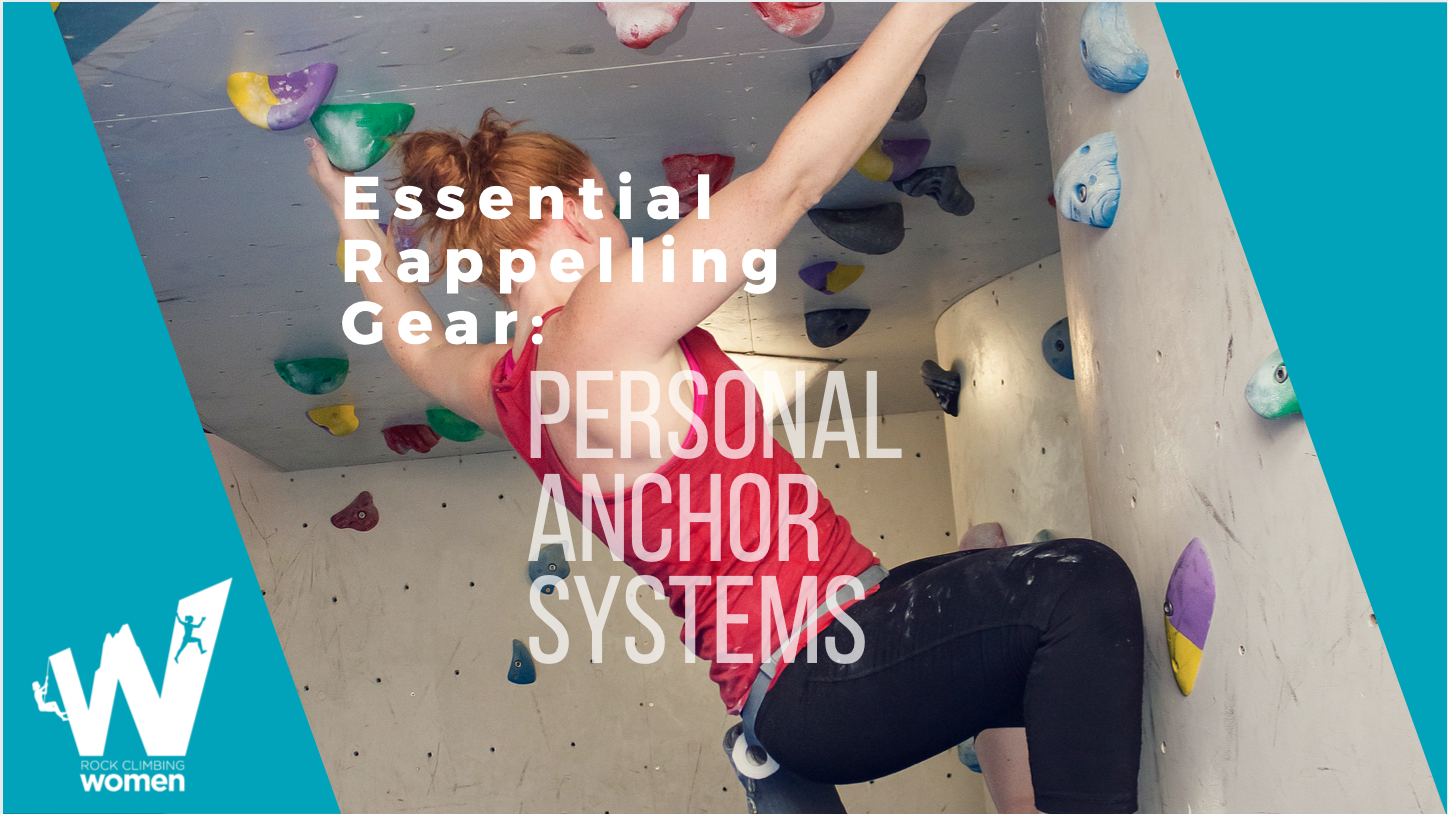In this second installment in our series on rappelling gear, we are going to talk about personal anchor systems (PAS for short).
A PAS is an essential piece of climbing gear if you are going outside.
It is how you secure yourself to the anchor system while you clean an anchor system and/or set up a rappel.
Your PAS not only keeps you alive but it also makes your life easier.
If you think back to the REI video on rappelling when I first introduced this topic, you will also recall that the climber extended her rappel device using her PAS.
In multi-stage rappelling (rappelling off of a multi-pitch route), extending your rappel device lets both you and your partner comfortably get on repelling at the anchor at the same time so you can double-check each other.
This is really important.
As the video also points out, rappelling is one of the most dangerous things we do in the climbing world.
There are lots of detailed steps, it’s usually the end of the day, we’re tired, and we are often a little checked out because we’ve achieved our day’s objective.
Being able to double-check that you and your partner have correctly threaded both ends of your rope through your rappel devices could be a literal lifesaver.
Even if you are only single-pitch rappelling after cleaning your anchor system, extending your repel has benefits.
It helps the device run more smoothly, lowers the chances that you’ll get hair or clothing stuck in the device (keeping your hair tied back and your hoodie strings tucked away will also help decrease these chances), and frees up your belay loop for your friction hitch.
You have quite a few options to choose from for your PAS.
I’ve picked two highly rated (kilonewtons wise) options that also allow you to extend your rappel device but also thrown in a dirtbag’s delight option for those folks who are looking for the challenge.
Why the Number of Kilonewtons is Important
Depending on usage, a climber may choose a dynamic rope or a static rope. Dynamic climbing ropes have stretch, as opposed to static ropes, which have no stretch. The stretch of a dynamic rope helps to absorb force anytime a climber takes a fall. If you are lead climbing, you must use a dynamic rope.
Why then would anyone want a static rope? Static ropes are great for route development, for example. In the process of route development, climbers spend lots of time hanging around on a rope and cleaning all of the moss, dirt, dust, and choss off of a route.
Since you are not climbing, you are also not falling. The weight of your body keeps the rope taut and there is no force to absorb.
These same principles apply to our PAS. A more dynamic PAS with a higher kilonewton (kN) rating can absorb some of the force should a climber take a fall while relying on their PAS. While this scenario is pretty infrequent, it can happen.
Just keep in mind that no matter which PAS you choose, you want to be weighting your PAS with your body weight while you are relying on it. By weighting your PAS, you are preventing a circumstance in which you could take a fall with slack in the system.
Because there is less stretch in such a short system, a fall could result in failure of a PAS (especially those with lower kilonewton ratings) and/or injury to yourself.
Metolius Personal Anchor System
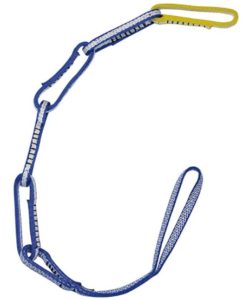
With a recent redesign that brings its rating up to 22kn, this is a tried and true, budget-friendly option for a PAS that you will see at crags all over North America. It comes with color-coding so you can quickly find the end loop and the mix of white Dyneema in the loops also makes it quick to locate on your harness. Compared to the Sterling Chain Reactor, it is less bulky but stiffer.
Sterling Chain Reactor Long
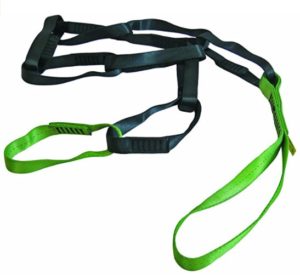
I love the long option for this PAS (though there is a shorter version that is also cheaper). Many folks find the extra length helpful when they need to share a multi-pitch anchor with other parties. I’ve also heard from tall people that the extra length is helpful for cleaning anchors. Sterling’s Chain Reactor is made from nylon, which makes it easier to handle but also a little bulkier than the Metolius PAS. It comes with a 14kn rating which is a little less than the Metolius PAS but still sufficient to hold three-factor two falls, according to Gear Lab.
And finally, as promised, the Dirtbag’s Delight:
Black Diamond Double Length Sling
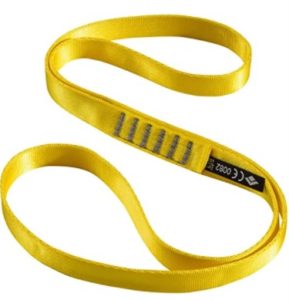
To quote Black Diamond: “Get tricky with them. Tie them off on chickenheads, sling trees, and chockstones or use them to help reduce rope drag…” AND use one as your PAS. This option comes with a 22kn rating which is awesome but does require extra knowledge about anchor systems and knots. You’ll want to be able to tie a clove hitch for this one in order to create the extension for your rappel. Additionally, you’ll want to use this option in conjunction with the center point of your anchor system since you don’t have the individual loops of those other PAS options which allow you to secure yourself to both sides of a permanent chain anchor.
Northeast Mountaineering gives a great visual on how to do this along with a bonus tutorial on how and why to saddlebag your climbing ropes on a rappel in their YouTube video titled NEM Education Series: Saddlebag Your Rappel Ropes.
If any part of using a double-length sling gives you pause, that is okay and normal! Choose one of the other PAS options but get the sling anyway and practice (on the ground) and ask questions of the more experienced climbers you meet along the way (and practice some more…and ask some more questions).
Thanks for nerd-ing out with me today about PAS options in this installment of our Essential Rappelling Gear Series! Stay tuned, next up we’ll talk about friction hitches.
Subscribe to our awesome newsletter below and get the answers and inspiration you’re looking for to go out and crush!
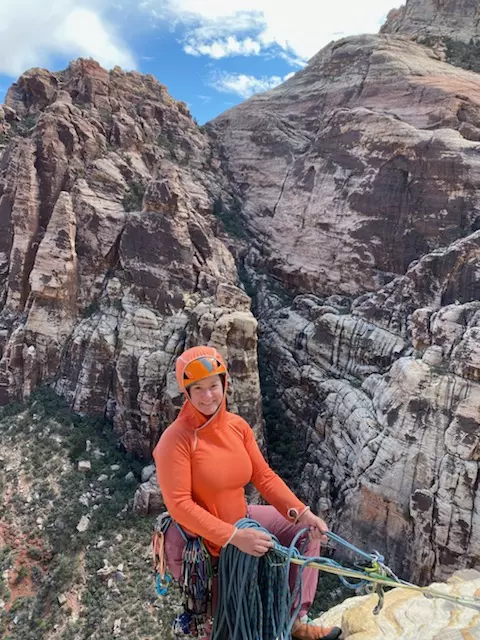
Jenny Nichols got her climbing start in Flagstaff, AZ in 2007. Today she lives in Seattle, WA where she works as a K-12 teacher. While she also dabbles in mountain biking, hiking, and kayaking, her passion is to combine climbing and international travel. To date she has climbed in thirteen different countries. She’s currently also learning how to woman a sailboat.

